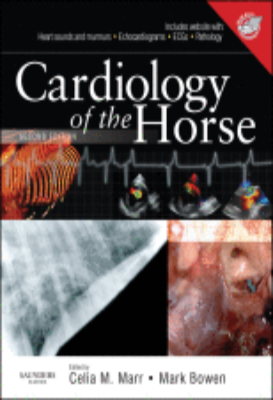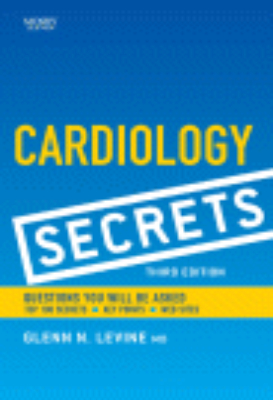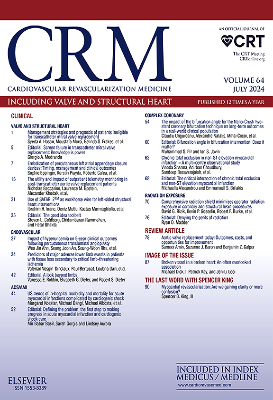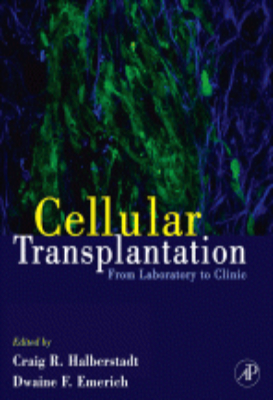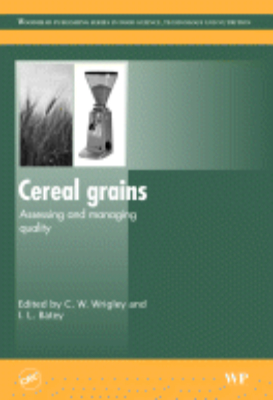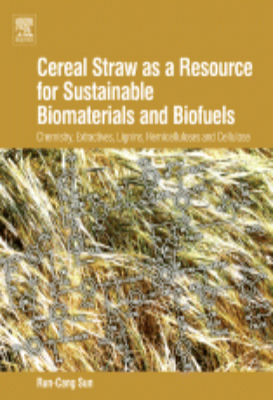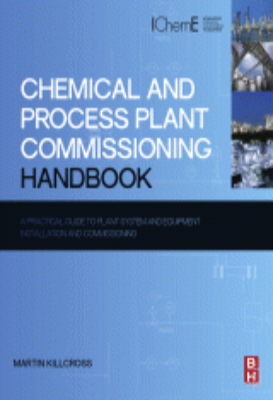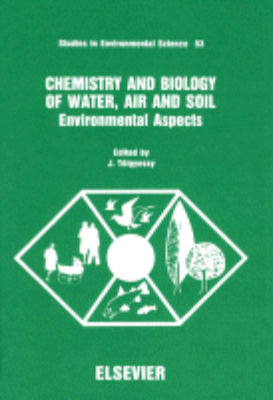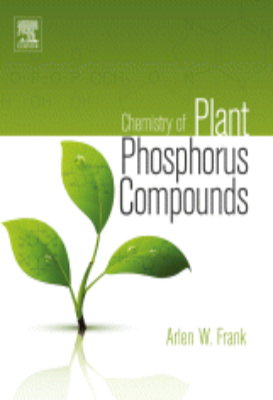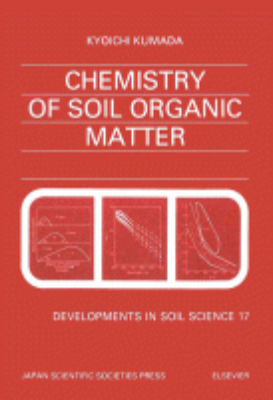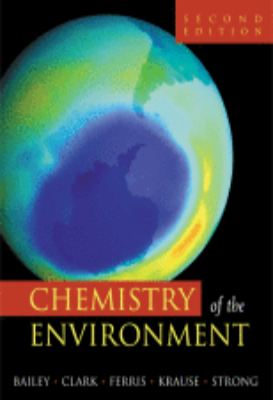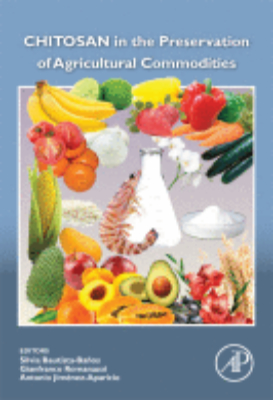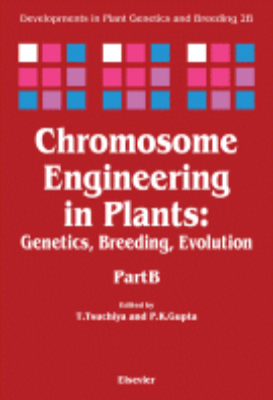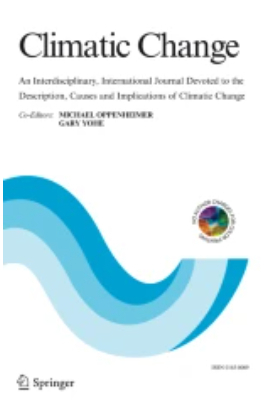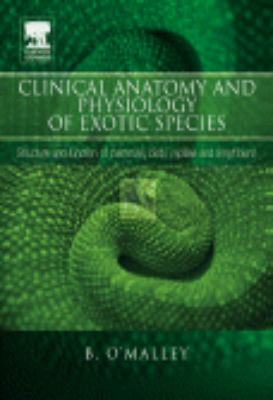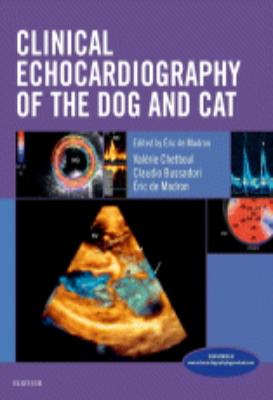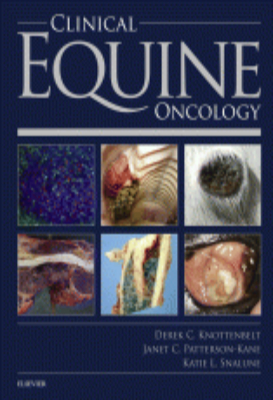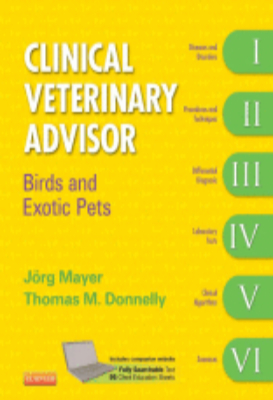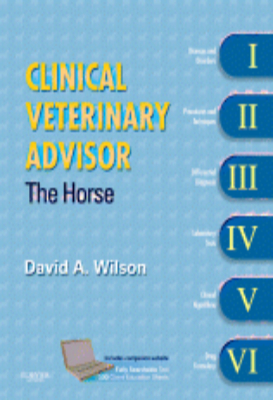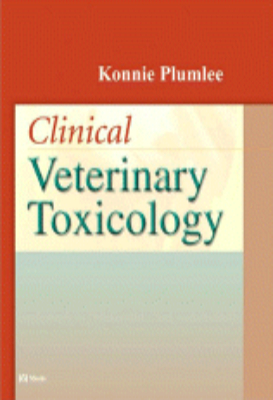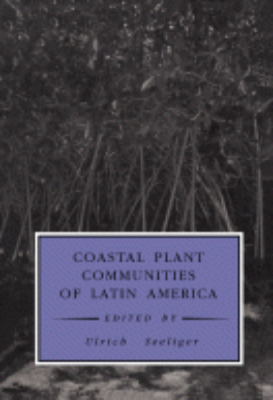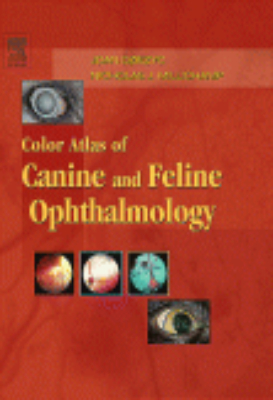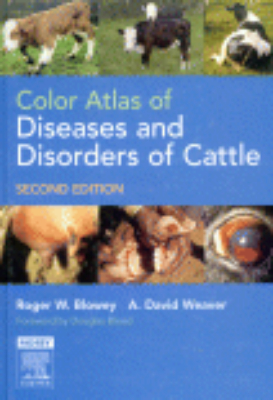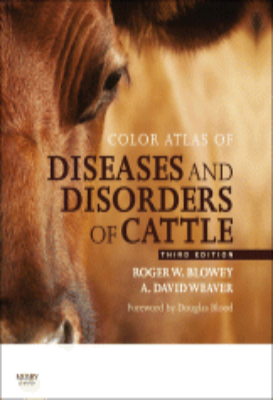Agricultural Science
Cardiology of the Horse
Cardiology of the Horse is a multi-author, contemporary reference on equine cardiology. The first section reviews the physiology, pathophysiology and pharmacology of the equine cardiovascular system. The second section describes diagnostic methods from basic to specialist examination skills and the third section addresses the investigation and management of common clinical problems using a problem-orientated approach. Suitable for students, general and specialist practitioners and teachers.
Cardiology Secrets
"Revised and updated, Cardiology Secrets, 3rd Edition has the answers. Comprehensive, yet easy to read, Dr. Levine presents all the latest advances in the diagnosis and treatment of heart conditions in this popular Secret Series volume. A two-color page layout, portable size, and a list of the Top 100 Secrets in cardiology help you better meet the challenges you face today. Youll find all the features you rely on from the Secrets Seriesa question-and-answer format, lists, mnemonics, tables and an informal tonethat make reference fast and easy. Plus, new imaging modalities and pharmacologic agents keep you on the cusp of the latest advances. Key Features. Expedites reference and review with a question-and-answer format, bulleted lists, mnemonics, and practical tips from the authors.. Covers the full range of essential topics, including general examination, diagnostic procedures, arrhythmias, symptoms and disease states, valvular heart disease, cardiovascular pharmacology, and other medical conditions with associated cardiac involvement.. Features a two-color page layout, ""Key Points"" boxes, and lists of useful web sites to enhance your reference power.. Presents a chapter containing ""Top 100 Secrets"", providing you with an overview of essential material for last-minute study or self-assessment.. Fits comfortably in the pocket of your lab coat so you have it conveniently on hand at all times.. Presents a new editor and a new contributor team who bring you fresh perspectives and the latest research in cardiology.. Discusses the latest imaging modalities and pharmacologic agents to keep you up to date.. Uses a new contemporary internal design that helps you navigate the text easier."
Cellular Transplantation
"There have been tremendous strides in cellular transplantation in recent years, leading to accepted practice for the treatment of certain diseases, and use for many others in trial phases. The long history of cellular transplantation, or the transfer of cells from one organism or region of the body to another, has been revolutionized by advances in stem cell research, as well as developments in gene therapy. Cellular Transplants: From Lab to Clinic provides a thorough foundation of the basic science underpinning this exciting field, expert overviews of the state-of-the-art, and detailed description of clinical success stories to date, as well as insights into the road ahead. As highlighted by this timely and authoritative survey, scale-up technologies and whole organ transplantation are among the hurdles representing the next frontier. The contents are organized into four main sections, with the first covering basic biology, including transplant immunology, the use of immunosuppressive drugs, stem cell biology, and the development of donor animals for transplantation. The next part looks at peripheral and reconstructive applications, followed by a section devoted to transplantation for diseases of the central nervous system. The last part presents efforts to address the key challenges ahead, such as identifying novel transplantable cells and integrating biomaterials and nanotechnology with cell matrices. Key Features. Provides detailed description of clinical trials in cell transplantation. Review of current therapeutic approaches. Coverage of the broad range of diseases addressed by cell therapeutics. Discussion of stem cell biology and its role in transplantation"
Cereal Grains
"Cereal grains are essential to our dietary needs, as well as for animal feeding and for industrial processing. Consumer needs can only be met by managing quality at all stages of the grain chain. Quality evaluation is also needed at each step for effective management. Cereal grains: assessing and managing quality provides a convenient and comprehensive overview of academic research and industry best practice in these areas. After an initial chapter introducing the themes of the book, further chapters in Part one review cereal grain morphology and composition and the diversity of uses of cereal grains. Chapters in Part two convey the characteristics and quality requirements of particular cereals, including wheat, rye, corn and rice. The use of analytical methods at different stages of the value-addition chain is the subject of Part three. The final section in the book reviews factors affecting grain quality such as breeding, storage and grain processing, and also possible future developments. With its expert team of editors and authors, Cereal grains: assessing and managing quality is a valuable reference for all those involved in the production and processing of cereal grains worldwide. Key Features. Reviews cereal grain morphology and composition and the diversity of the different uses of cereal grains. Examines the use of analytical methods at different stages of the value-addition chain. Reviews the factors affecting grain quality such as breeding, storage and grain processing, as well as possible future developments"
Cereal Straw as a Resource for Sustainable Biomaterials and Biofuels
"Materials from renewable resources are receiving increased attention, as leading industries and manufacturers attempt to replace declining petrochemical-based feedstocks with products derived from natural biomass, such as cereal straws. Cereal straws are expected to play an important role in the shift toward a sustainable economy, and a basic knowledge of the composition and structure of cereal straw is the key to using it wisely. Cereal Straw as a Resource for Sustainable Biomaterials and Biofuels: Chemistry, Extractives, Lignins, Hemicelluloses and Cellulose provides an introduction to straw chemistry. Topics discussed include the structure, ultrastructure, and chemical composition of straw; the structure and isolation of extractives from the straw; the three main components of straw: cellulose, hemicelluloses, and lignins; and chemical modifications of straw for industrial applications. This book will be helpful to scientists interested in the areas of natural resource management, environmental chemistry, plant chemistry, material science, polysaccharide chemistry, and lignin chemistry. It will also be of interest to academic and industrial scientists/researchers interested in novel applications of agricultural residues for industrial and/or recycling technologies. Key Features. Provides the basics of straw composition and the structure of its cell walls. Details the procedures required to fractionate straw components to produce chemical derivatives from straw cellulose, hemicelluloses, and lignins. Elucidates new techniques for the production of biodegradable materials for the energy sector, chemical industry, and pulp and paper business"
Chemical and Process Plant Commissioning Handbook
"The Chemical and Process Plant Commissioning Handbook, winner of the 2012 Basil Brennan Medal from the Institution of Chemical Engineers, is a guide to converting a newly constructed plant or equipment into a fully integrated and operational process unit. Good commissioning is based on a disciplined, systematic and proven methodology and approach that achieve results in the safest, most efficient, cost effective and timely manner. The book is supported by detailed, proven and effective commission templates, plus extensive commissioning scenarios that enable the reader to learn the context of good commissioning practice from an experienced commissioning manager. It focuses on the critical safety assessment and inspection regimes necessary to ensure that new plants are compliant with OSHA and environmental requirements. Martin Killcross has brought together the theory of textbooks and technical information obtained from sales literature, in order to provide engineers with what they need to know before initiating talks with vendors regarding equipment selection. Key Features. Unique information from a respected, global commissioning manager: delivers the know-how to succeed for anyone commissioning new plant or equipment. Comes with online commissioning process templates that make this title a working tool kit as well as a key reference. Extensive examples of successful commissioning processes with step-by-step guidance enable readers to understand the function and performance of the wide range of tasks required in the commissioning process"
Chemistry of Plant Phosphorus Compounds
"Provides a high level reference source for scientists engaged in any aspect of plant research chemistry, biochemistry or physiology with primary focus on the chemistry of phosphorus-containing compounds that occur naturally in the plant kingdom, and specifically in the higher plants (Plantae). The book is comprehensive with respect to nomenclature, physical properties, and distribution worldwide. There are many tables of actual data on phosphorus compounds occurring in whole plants and parts of plants. The tables provide detailed data that is needed by the food industry, agriculture, etc as many of the phosphorus compounds are common to both plants and animals. Two appendices cover other aspects including changes in phosphorus-containing compounds during germination and their accumulation during growth and senescence. The final sections of the book comprise separate indexes of plants, compounds and authors. Key Features. Comprehensive examination of phosphorus compounds found in plants. Extensive tables listing types of compounds and their occurrence in plants including: Nomenclature; Occurrence; Physical Properties; Synthesis; Hydrolysis; Phosphorylation; Extraction; Separation and Analysis. Easy to use indexes of plants, compounds and authors"
Chemistry of the Environment
"Emphasizing new science essential to the practice of environmental chemistry at the beginning of the new millennium, Chemistry of the Environment describes the atmosphere as a distinct sphere of the environment and the practice of industrial ecology as it applies to chemical science. It includes extensive coverage of nuclear chemistry, covering both natural environmental sources and anthropogenic sources, their impacts on health, and their role in energy production, that goes well beyond the newspaper coverage to discuss nuclear chemistry and disposal in a balanced and scientifically rational way. Key Features. This is the only environmental chemistry text to adequately discuss nuclear chemistry and disposal in a balanced and scientifically rational way.. The overall format allows for particular topics to be omitted at the discretion of the instructor without loss of continuity.. Contains a discussion of climate history to put current climate concerns in perspective, an approach that makes current controversy about climate change more understandable."
Chitosan in the Preservation of Agricultural Commodities
Chitosan in the Preservation of Agricultural Commodities presents a cohesive overview of research topics regarding the production and characterization of chitosan, the development of coatings and fi lms, its functional properties, and antimicrobial potential of this compound on economically important agricultural commodities. It includes the modes of action from a physiological, enzymatic, and molecular perspective, and evaluations of the activity of chitosan nanocomposites and nanoparticles in biological models. The first section deals with the chemical characteristics and functional properties of chitosan and new chitosan-based biomaterials intended for food preservation. The second section covers various aspects of the control achieved by chitosan on different microorganisms affecting various horticultural commodities, grains, and ornamentals, and its modes of action. The third section explores enzymatic and gene expression induction by chitosan application on fruit and vegetables; the fourth section offers insight on the use of chitosan nanocomposites in biological models associated with food conservation and control of microorganisms.
Clinical Anatomy and Physiology of Exotic Species
Clinical Anatomy and Physiology of Exotic Species bridges the gap between the clinical application of the anatomy and physiology of commonly-encountered exotic species and veterinary treatment. The first in-depth textbook of its kind, this resource deals solely with the comparative anatomy and physiology of exotic species small mammals, reptiles, and birds. For these commonly encountered species, it highlights clinical considerations for veterinary treatment. The book is heavily illustrated with clear line diagrams, radiographs, and color illustrations, explaining clearly the functioning of exotic species.
Clinical Echocardiography of the Dog and Cat
Covering both classical modalities of echocardiography and newer techniques, Clinical Echocardiography of the Dog and Cat shows how to assess, diagnose, and treat canine and feline heart disease. A clinical approach demonstrates how these modalities may be used to acquire images, and then how you can recognize and identify patterns, relate them to different diseases, and manage patient care with those findings. The print book includes a companion website with 50 videos of cardiac ultrasound exams and procedures. Written by veterinary cardiology specialists and echocardiographers Eric de Madron, Valerie Chetboul, and Claudio Bussadori, this indispensable echocardiology resource is ideal for general practitioner veterinarians as well as specialists, including cardiologists and radiologists.
Clinical Equine Oncology
Diagnose common equine tumors accurately and find clinical information quickly! Clinical Equine Oncology describes the cellular basis of cancer and its etiopathogenesis, along with the principles of diagnosis, treatment, and management of cancer cases. This comprehensive resource offers more than just facts and diagrams hundreds of detailed photographs make it easier to recognize and evaluate more than 50 types of tumors. Its useful to anyone working in the equine field, whether youre a veterinary surgeon, a practicing vet, equine dentist, or veterinary student. Written by a recognized expert on equine medicine, Derek Knottenbelt, this is the only book on the market that is completely dedicated to coverage of cancer in horses!
Clinical Veterinary Advisor: Birds and Exotic Pets
Providing accurate, at-a-glance information on managing the diseases of birds and exotic pets, Clinical Veterinary Advisor: Birds and Exotic Pets is the only comprehensive resource on the market covering birds, reptiles, small mammals, and other non-traditional pets. Concise summaries of hundreds of common medical problems help you consider differential diagnoses, recommend diagnostic tests, interpret results mindful of unique species differences, utilize important concepts of species-specific husbandry and nutrition, prescribe treatments, and provide follow-up care. With contributions from recognized avian and exotics experts and edited by Jrg Mayer and Thomas M. Donnelly, this clinical reference provides all the information you need in one book!
Clinical Veterinary Advisor: The Horse
No other equine quick reference comes close to providing this much accurate, timely, and clinically useful diagnostic and therapeutic information. Clinical Veterinary Advisor: The Horse is six books in one -- Diseases and Disorders, Procedures and Techniques, Differential Diagnosis, Laboratory Tests, Clinical Algorithms, and a Drug Formulary. Plus, a companion website gives you convenient, searchable access to the full text and other useful tools. Covering hundreds of current topics in a concise at-a-glance format, this authoritative resource from David A. Wilson, DVM and a group of respected contributors is a must-have guide for the busy equine or mixed-practice practitioner.
Clinical Veterinary Toxicology
This book covers all aspects of toxicology, including toxic diseases of large animals, small animals, and exotic pets. It provides key information on how poisons affect the body, how the body responds to a foreign substance, how poisonings are diagnosed, and how poisonings are treated. Coverage includes every organ system of every species of animal with details on each body systems susceptibility to poison. Poisons affect animals differently depending on species, breed, age, gender, health status, and reproductive status. This resource addresses these differences, allowing the veterinarian to determine the class of toxicant, the mechanism of action, and the proper course of treatment. If confronted with an unknown poison, the information in this book will assist the veterinarian in formulating a list of potential poisons based on the clinical signs that the animal is exhibiting, and in choosing the appropriate tests to narrow the list to one or a few possible poisons.
Coastal Plant Communities of Latin America
"Published ecological information on Latin American coasts is scarce, despite the growing need for a comprehensive examination of coastal processes on a global scale. This book brings together details on benthic marine algae, seagrasses, salt marsh, mangrove, and dune plant communities throughout Latin America. Researchers and graduate students in plant ecology, marine biology, and environmental management will benefit from the valuable information in this book. Key Features. Distribution and community ecology. Modern research approaches. Coastal management possibilities"
Color Atlas of Diseases and Disorders of Cattle: 2003
The second edition of the Color Atlas of Diseases and Disorders of Cattle again illustrates all the conditions encountered in cattle worldwide. This new edition has been extensively revised and expanded to have more (now 752) illustrations, primarily of live animals.The revised text now includes sections on management and control for the important disorders. Newer conditions such as necrotic enteritis, toe ulcers, heel ulcers and tail necrosis have been added. The illustrations themselves have been reviewed. Many have been replaced, while others have been added, so that Foot and Mouth Disease has six and Rinderpest seven colour illustrations. Cross-references to other conditions, a major aid to differential diagnosis in the field, have been strengthened.Over 70 foreign contributors from the Far East (Japan, China) to South America (Brazil,Argentina), Africa (South Africa, Kenya, Somalia) and the United States (Pennsylvania, Florida, Missouri) have been joined by a further thirty from the UK. The emphasis of the atlas remains the visible signs of diseases and disorders in the live animal, and this gives the book a unique scope. This new edition will re-establish the firm place which the atlas already has in the veterinary market for cattle practitioners, government and industry veterinarians, as well as veterinary and agricultural students, and managers of large-scale cattle enterprises throughout the world.
Color Atlas of Diseases and Disorders of Cattle: 2011
The Color Atlas of Diseases and Disorders of Cattle is the established and respected illustrated guide to the full range of conditions encountered in cattle worldwide. For this new edition the atlas has been redesigned to present over 840 colour illustrations and clearer than ever coverage of conditions, with a special emphasis on ease of use. The text has been updated and rewritten to encompass many new conditions including burns, bleeding calf syndrome, rib fracture and jejunal hemorrhagic syndrome, while treatment of existing conditions has been expanded. The emphasis of this new edition of the Color Atlas remains the visible signs of diseases and disorders in the live animal. In its third edition guise, the atlas is an indispensable reference for both experienced and novice cattle practitioners, government and industry veterinarians, as well as veterinary and agricultural students, and managers of large-scale cattle enterprises throughout the world.

